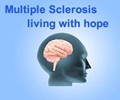Data from an observational phase IV study of 499 patients entitled The Swiss MS Skin Project show that multiple sclerosis (MS) patients taking AVONEX (interferon beta-1a IM) reported significantly fewer injection site reactions (ISRs) compared to patients on Betaferon� (interferon beta-1b), Copaxone� (glatiramer Acetate) or Rebif � (interferon beta-1a). The study also showed AVONEX patients were less likely to have missed a dose due to an injection site reaction in the four weeks prior to first assessment than those patients on other interferon therapies. These data were presented as a poster at the 25th Annual European Committee for Treatment and Research in Multiple Sclerosis (ECTRIMS) meeting in D�sseldorf, Germany.
"This study showed that treatment with AVONEX leads to fewer injection site reactions which is an important factor in improving compliance. As the only once-weekly injection treatment, AVONEX offers people with relapsing MS an easy-to-use and highly effective treatment option," said Dr. Karsten Beer, lead investigator for the study and private neurologist in Wil, Switzerland. "Convenience of an MS therapy is an important consideration for patients, as they do not want a therapy that will interfere with their daily lives."The Swiss MS Skin Project was designed to determine the frequency of injection site reactions, including skin necrosis and lipoatrophy, in patients taking AVONEX, Betaferon, Copaxone, or Rebif (ABCRs). These data are important as ISRs are thought to reduce treatment compliance among patients. The study enrolled nearly 500 patients on ABCRs for a minimum of two years (mean treatment duration of 5.9 years) and followed patients for a total of one year. Study findings include:
- At the first assessment, significantly fewer AVONEX patients experienced ISRs (13.4% vs 57.7% for Betaferon [p < .0001], 30.4% for Copaxone [p = 0.056], 67.9% for Rebif [p < 0.001]), necrosis (0.0% vs 5.7% for Betaferon [p = 0.0279], 0.0% for Copaxone [p = NS], 6.0% for Rebif [p = 0.0201]) and lipoatrophy (1.2 % vs 8.9% for Betaferon [p = 0.0210], 13.0% for Copaxone [p = 0.0322], 10.3% for Rebif [p = 0.0093]);
- No AVONEX patients missed a dose in the four weeks prior to first assessment due to ISRs (vs 5.7% for Betaferon [p = 0.44], 4.3% for Copaxone [p = NS], and 7.1% for Rebif [p = 0.011]). These percentages were statistically significant versus Betaferon and Rebif; and
- Significantly more patients remained on AVONEX over the one year trial (86.6% vs 79.7% for Betaferon, 60.9% for Copaxone, and 83.2% for Rebif [overall p = 0.0364]) than any other treatment.
The poster describing the study entitled 'An Evaluation of Adverse Skin Reactions in Patients with Multiple Sclerosis on Disease-Modifying Therapies' (P 787) is available for viewing on September 11, 2009 at 3:30pm local time.
Source-Eurekalert
LIN









